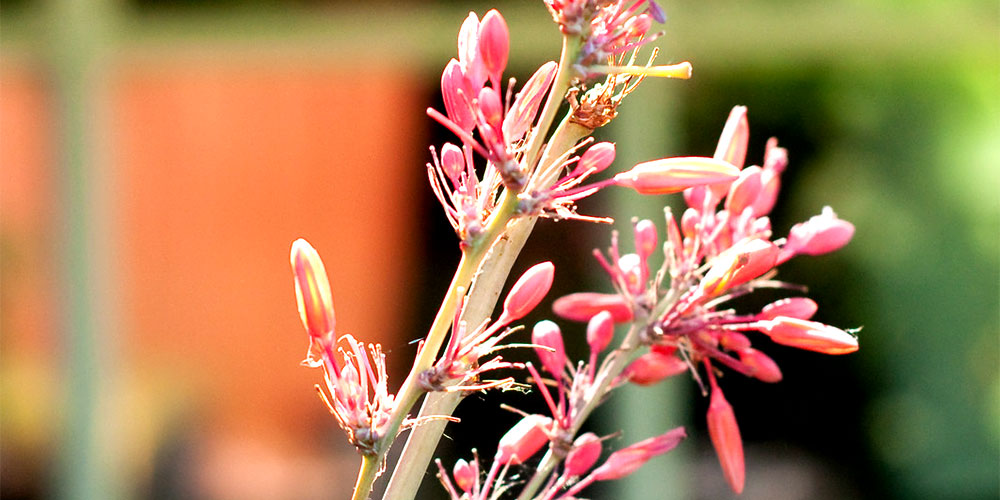How to Plant and Care for Red Yucca
Red yucca plants (Hesperaloe parviflora) are tough, drought-tolerant plants that produce showy, reddish coral blooms from spring through midsummer. In warmer climates, plants may bloom year-round. Although red yucca isn’t a true yucca the leathery, arching leaves are very similar. However, the leaves have a more grass-like appearance, and they produce no spikes or thorns. Planting a red yucca plant in your garden is an easy way to add some color and interest to your landscape.
A member of the Agave family (hesper-aloe), Red Yucca is a hummingbird magnet when in full bloom. Additionally, due to the non-messy nature of not dropping a lot of plant debris, these are great accent plants anywhere – even for pool landscaping.
The red to pink colored blooms sit atop long, graceful stems that can be up to 8 feet tall. They are borne in elongated clusters of trumpet shaped florets that are 1.5 to 2 inches long. Once the blooms of Red Yuccas are spent, they go into the next phase with interesting seed pods that add texture to your plantings.
Red Yucca has a long growing season from late spring into late fall. The plant is very tolerant of the low winter temperatures typical of the desert and is cold hardy to the low teens and below.
You’ll get the best performance from the Red Yucca in a full sun location. While they will tolerate a shadier spot, you won’t get the full impact of those beautiful blooms as they will be far less abundant.
What Type Of Soil Is Best For Red Yucca?
Red yucca plants do well in ordinary garden soil that is well-drained. They don’t tolerate wet feet, so if your garden has a tendency to be soggy, amend the soil with plenty of sand or gravel before planting. These plants can also take inadequate soil conditions, as long as the soil adequately drains. You can also grow red yucca in containers, but be sure to use a potting mix that drains well.
How Much To Water Red Yucca Plants
When first newly installed, the plants will require good moisture practices, but once established they need very little water to thrive. Over watering will make the plant look shaggy, so be sure to watch how much moisture you give them during the adjustment stage in your yard.
Apply enough water to moisten the soil to a depth of 6 to 8 inches. Container-grown plants may need more water, since the soil dries out more quickly in pots. Don’t allow the soil to dry out completely, or the plant will wilt and may die.
How To Fertilize Red Yucca
Red yucca plants don’t require a lot of fertilizer, but a light application of balanced all-purpose fertilizer once or twice a year should be enough. Scatter the fertilizer around the plant and water it in well. You can also side-dress red yucca plants with compost every few months to give them an extra boost.
How Fast Does Red Yucca Grow
Red yucca plants grow slowly, typically reaching a height of only 2 to 3 feet if not cut back. They can take several years to reach their full size.
When To Prune Red Yucca
Red yucca plants don’t require pruning, but you can cut them back if they become too large for their space. Cut the plants back to within a few inches of the ground in late winter or early spring before new growth begins. This will encourage the plants to produce new leaves and stems, resulting in a fuller plant. Before winter you will want to clip out all of the old flowering stems as they will start to look unattractive. The seeds can be removed from the pods and used to grow new plants.
Final Thoughts
Red yucca plants are a beautiful addition to any Southwest garden or landscape, and they’re easy to care for. They grow slowly but can reach a height of 3 to 4 feet in a few years. You can water red yucca plants regularly during hot, dry weather, and fertilize them with a light application of balanced all-purpose fertilizer once or twice a year. Pruning red yucca is not necessary, but you can cut them back if they become too large for their space.







